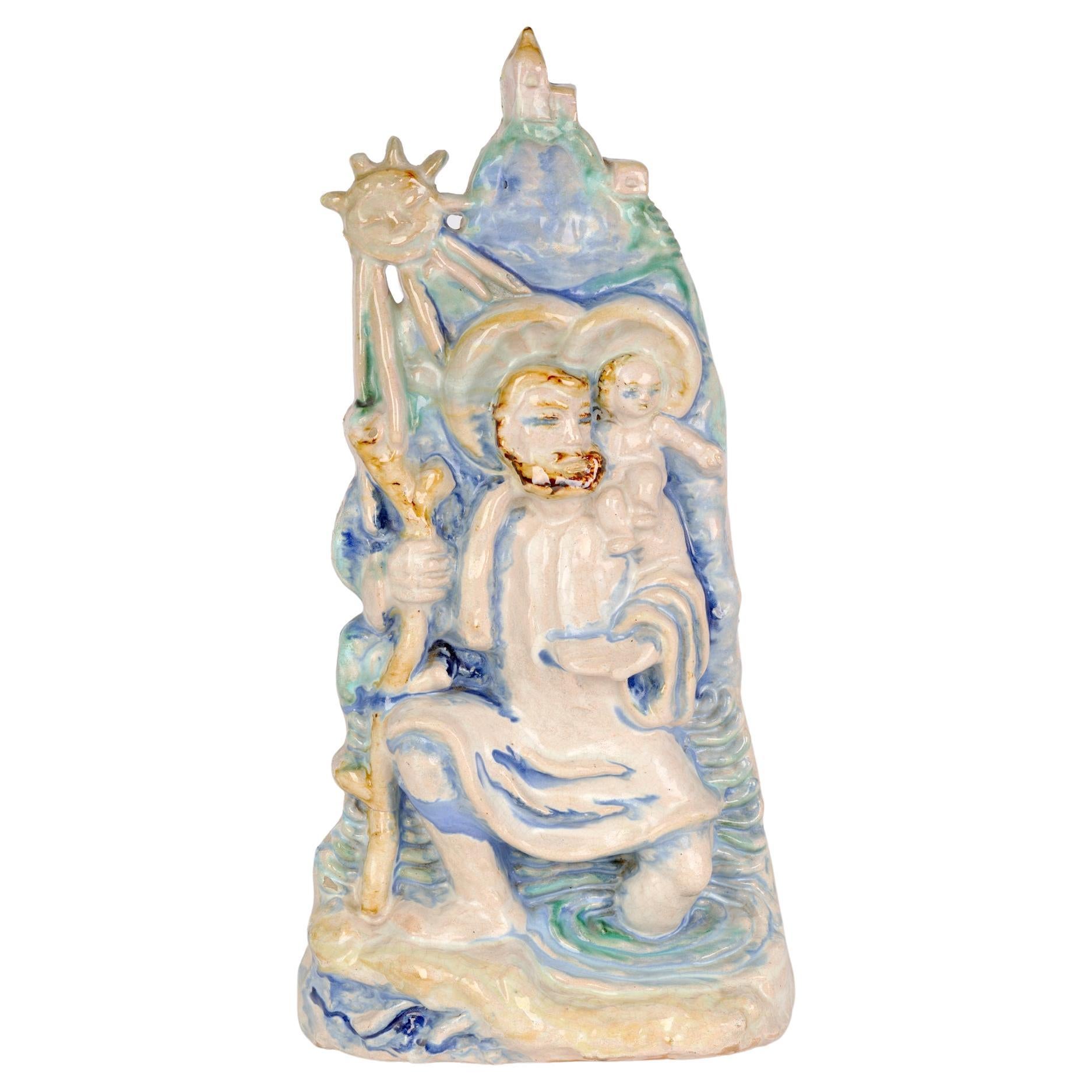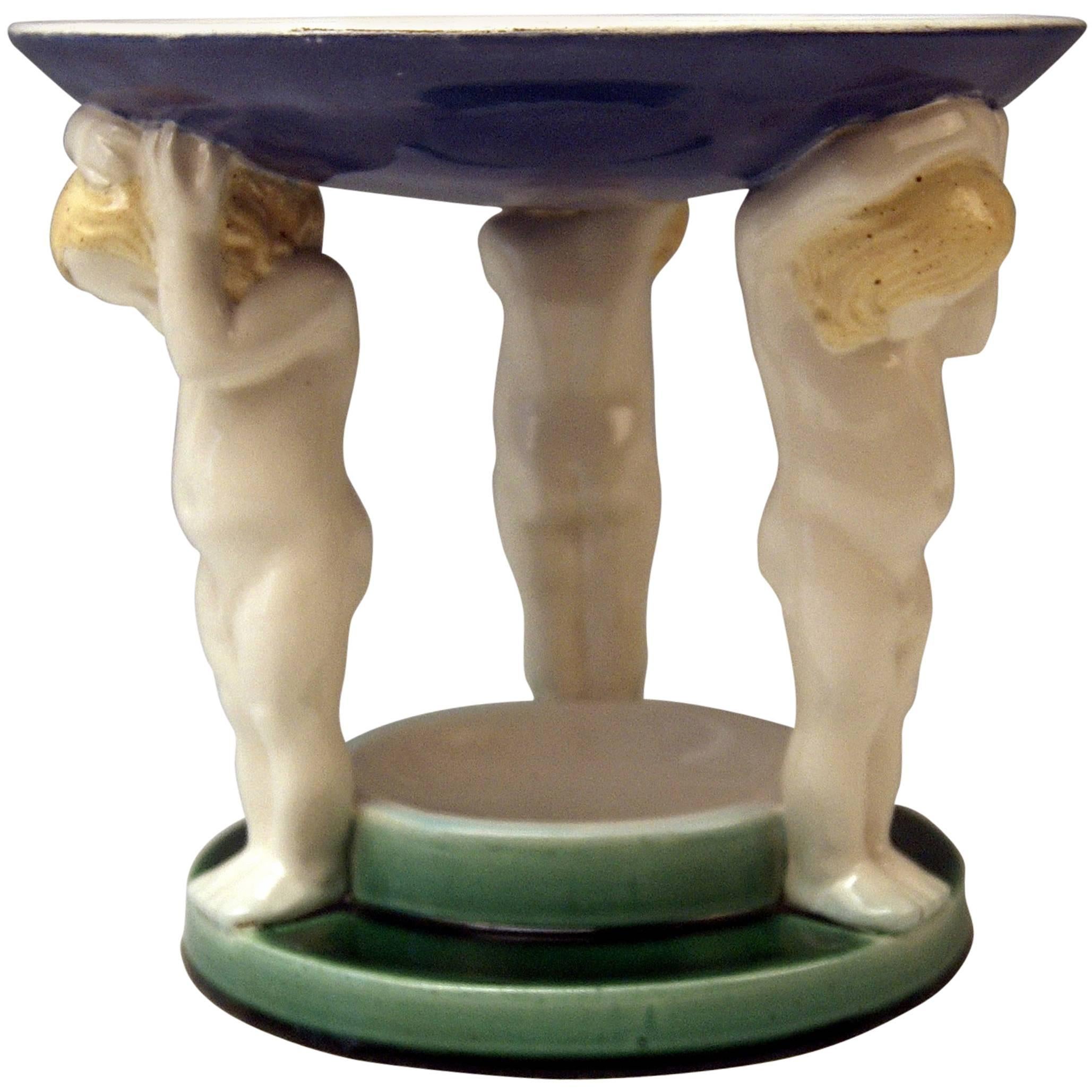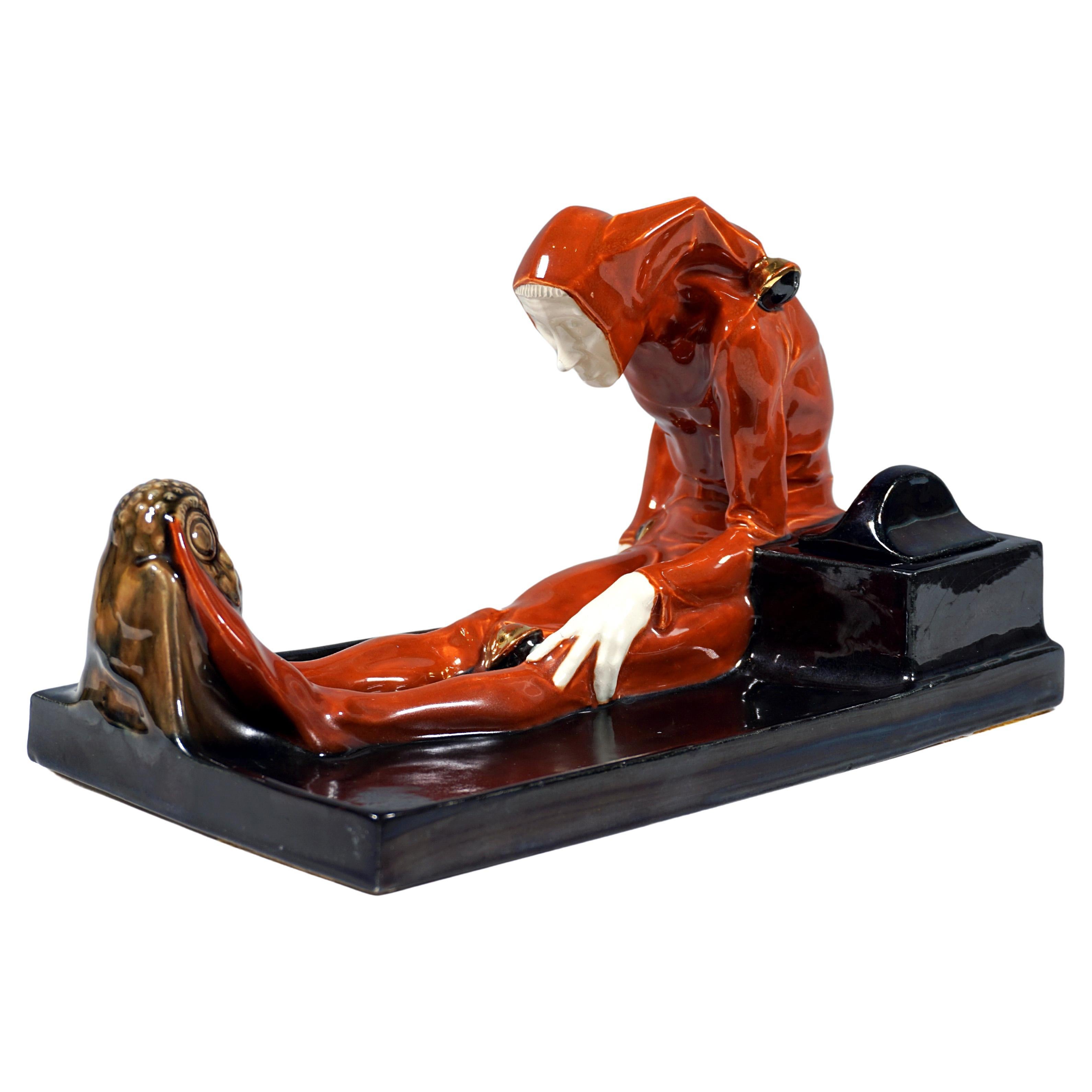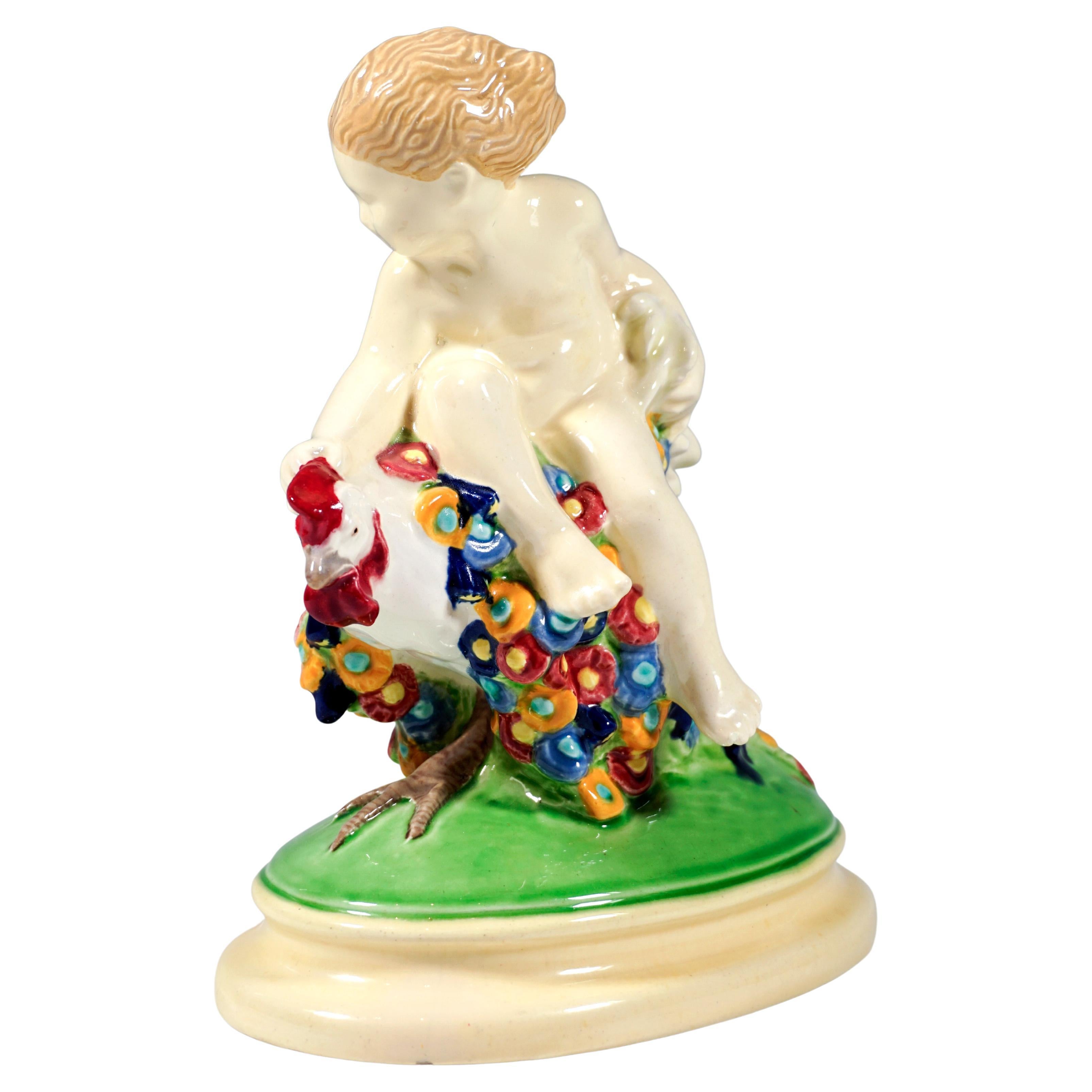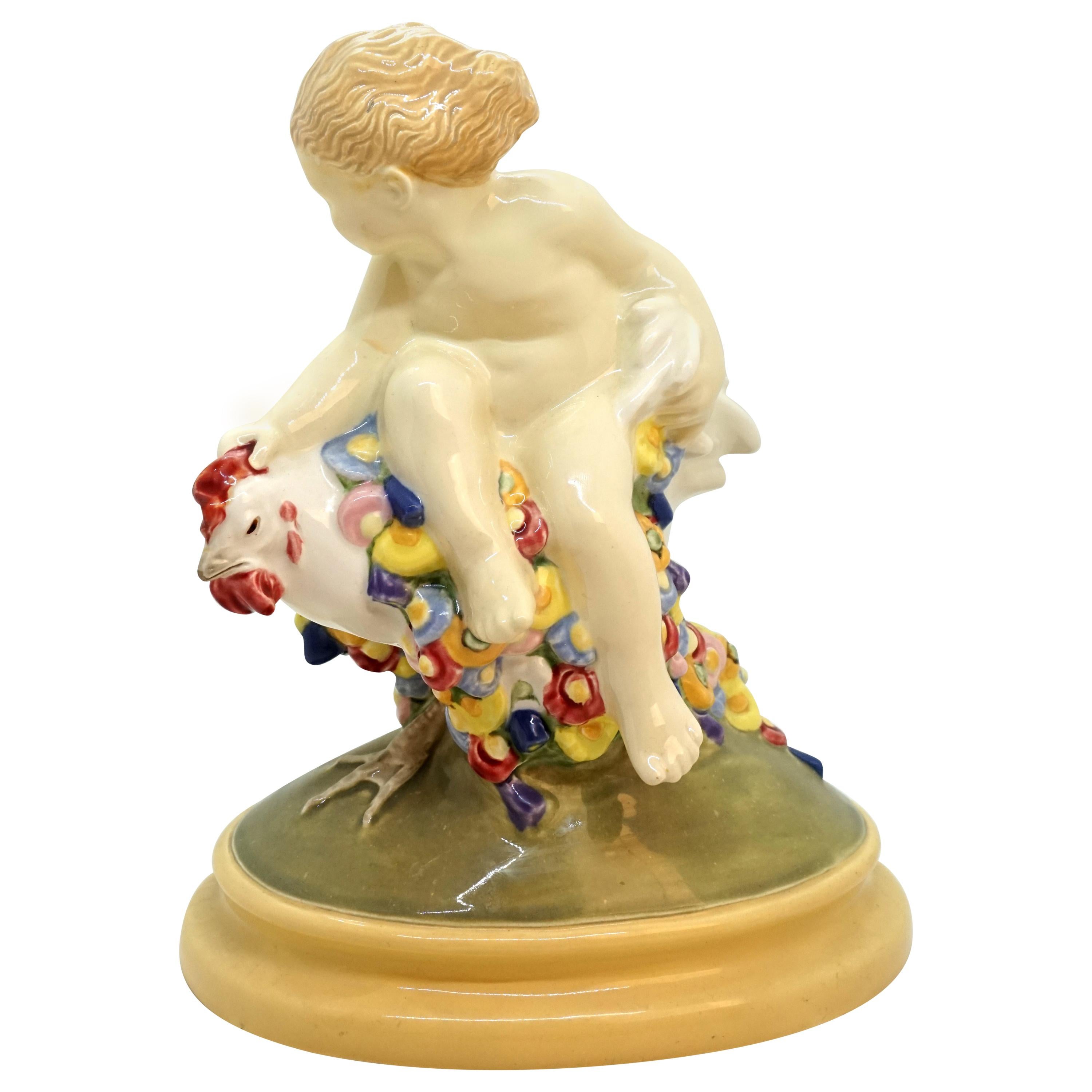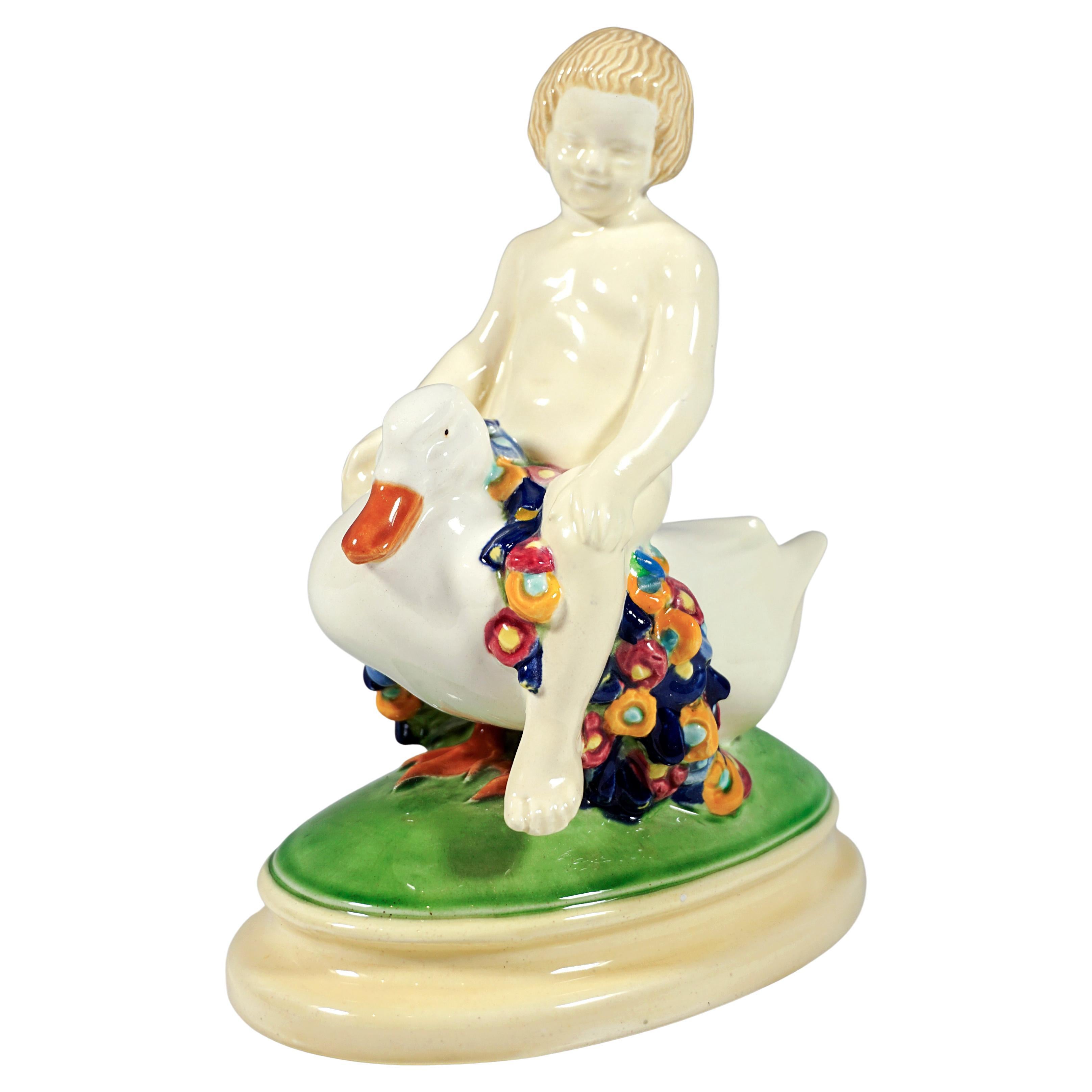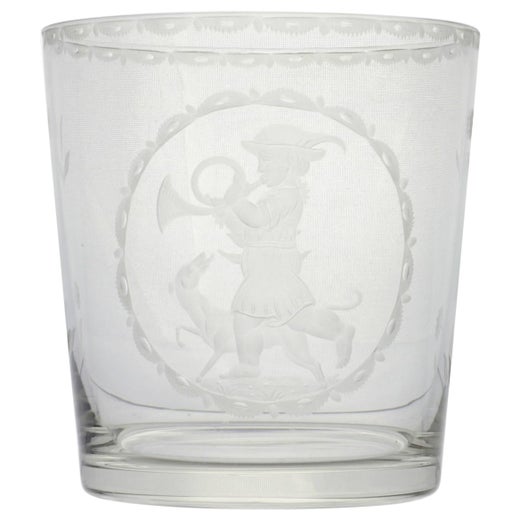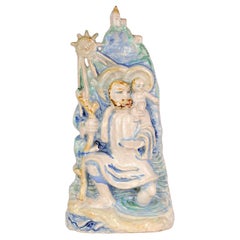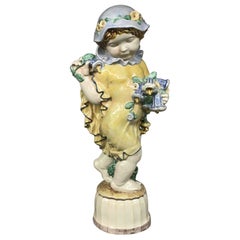
Rare Putto Africa by Michael Powolny circa 1906
View Similar Items
Rare Putto Africa by Michael Powolny circa 1906
About the Item
- Creator:Wiener Keramik Werkstätte (Manufacturer),Michael Powolny (Designer)
- Dimensions:Height: 21.66 in (55 cm)
- Style:Jugendstil (Of the Period)
- Materials and Techniques:
- Place of Origin:
- Period:
- Date of Manufacture:design around 1906, manufactured 1906-12
- Condition:
- Seller Location:Vienna, AT
- Reference Number:1stDibs: LU98251104340
Michael Powolny
As both a designer and a teacher, the Austrian ceramicist and glassware designer Michael Powolny was an important figure in the development of modernist aesthetics in Vienna at the turn of the 20th century. His romantic sculptural pottery figures embrace the lush, dynamic stylings of Gustav Klimt and other progressive artists, while his functional pieces — such as glass bowls and vases — employ the simple linear and geometric ornamentation that marked the work of Josef Hoffmann and other members of the Wiener Werkstätte community of designers and craftsmen.
Powolny received classical training in ceramics from his father, a potter, and at the Vienna School of Applied Arts, but later joined in the modernizing movement in the Austrian arts at the close of the 19th century. In 1897, Klimt, Hoffman, Koloman Moser and other artists and architects founded the Vienna Secession, a group that fought for freedom of expression against the city’s tradition-bound arts establishment. Powolny’s work reflects the changing times. He used classical figures in his ceramics — female nudes, cherubs — yet would dress them in modern ornament such as garlands of abstract, geometric flowers. Pieces from Powolny’s ceramics company were sold through the Wiener Werkstätte (Viennese Workshops) founded by Hoffmann and Moser, and Hoffman later hired Powolny to create ceramic ornamentation for his architectural masterpiece, the Palais Stoclet in Brussels.
Powolny would go on to design glassware that combines elegant, tapering forms with precise linear decoration. His most influential work may have come as a professor at the School of Applied Arts, where he taught both Lucie Rie, the great Austrian-British modernist ceramicist, and the American potter Viktor Schreckengost, creator of the “Jazz Bowl,” an icon of the Streamline Moderne design. As you will see from the items on offer, Michael Powolny’s works have a double appeal: in their sprightly, endearing forms and as artifacts that document a period of signal change in the history of modern arts and crafts.
- Michael Powolny Style Putto or Putti Ceramic SculptureBy Michael PowolnyLocated in New York, NYExceptional Austrian Putto in the style of Michael Powolny with bow, arrow and quiver on his back sitting on a colorful bed of blue bubbles. Magnificent s...Category
Vintage 1920s Austrian Figurative Sculptures
MaterialsStoneware, Ceramic
- Wiener Werkstatte St Christopher Pottery Figure Attributed to Michael PowolnyBy Michael PowolnyLocated in Bishop's Stortford, HertfordshireAn unusual Austrian art pottery sculptural figure of St Christopher carrying the Christ child across a river attributed to renowned Austrian sculptor, Ceramist, designer and teacher Michael Powolny (Austrian, 1871-1954) and probably dating between 1920 and 1930. The hand-crafted figure shows St Christopher with the Christ child on his shoulder and a wooden staff...Category
Vintage 1920s Austrian Art Deco Figurative Sculptures
MaterialsStoneware
- Michael Powolny Austrian Ceramic Sculpture of Putto with Flowers, “Summer”By Michael PowolnyLocated in Milford, NHA fine ceramic Art Nouveau sculpture of a putto with flowers by Austrian sculptor Michael Powolny, (1871-1954). Powolny was born in Judenburg, attended the School of Arts & Crafts in Znaim and, seven years later, went to the School of Arts & Crafts in Vienna. In 1906, he founded the Wiener Keramik together with Bertold Löffler...Category
Early 20th Century Austrian Art Nouveau Figurative Sculptures
MaterialsCeramic
- Michael Powolny Art Nouveau Vienna Centrepiece with Three Cherubs, circa 1912By Michael PowolnyLocated in Vienna, ATMichael Powolny Art Nouveau centrepiece with three cherubs - most lovely ceramics item! Modelled by Michael Powolny (1871 - 1954), circa 1907. Hallmarked: Manufactured by Wiener Keramik (Vienna Ceramics) (WK / hallmarked). Material is ceramics (multicolored painted / glossy finish). Model 113 (model number is impressed / bottom glazed) Monogram of "Michael Powolny (MP)" is impressed, too. Made 1912. ________________________________________________________________________________ Subject: Most lovely three naked male cherub's figurines holding a round plate attached to their heads / the mentioned plate is blue painted at bottom side / the surface of tiered round socle is partially moss green shaded. ________________________________________________________________________________ Height: 21.0 cm (= 8.66 inches) Diameter of platter: 24.5 cm (= 9.64 inches) ________________________________________________________________________________ Bibliography: Waltraud Neuwirth, Markenlexikon für Kunstgewerbe (3), Wiener Keramik / Modelle 1906-13; pages 100-101 Elisabeth Frottier, "Michael Powolny, Keramik und Glas aus Wien 1900-1950", Vienna 1990, page 200, List of Work (= Werkverzeichnis) number W 113 (WV 61), Model 113 ________________________________________________________________________________ Experts of Fine Arts assess Michael Powolny's work nowadays as result of activity of one the most important ceramics sculptors / designers of Austrian Art Nouveau. Most of Powolny's successors were strongly under his sway since Powolny had left 'large steps' in Viennese Art of Ceramics. Excellent condition. ____________________________________________________________________________________ About Michael Powolny (Sculptor). As both a designer and a teacher, the Austrian ceramicist and glassware designer Michael Powolny was an important figure in the development of modernist aesthetics in Vienna at the turn of the 20th century. His romantic sculptural pottery figures embrace the lush, dynamic stylings of Gustav Klimt and other progressive artists, while his functional pieces — such as glass bowls and vases — employ the simple linear and geometric ornamentation that marked the work of Josef Hoffmann and other members of the Wiener Werkstätte Community of designers and craftsmen. Powolny received classical training in ceramics from his father, a potter, and at the Vienna School of Applied Arts, but later joined in the modernizing movement in the Austrian arts at the close of the 19th century. In 1897, Klimt, Hoffman, Koloman Moser and other artists and architects founded the Vienna Secession, a group that fought for freedom of expression against the city’s tradition-bound arts establishment. Powolny’s work reflects the changing times. He used classical figures in his ceramics — female nudes, cherubs — yet would dress them in modern ornament such as garlands of abstract, geometric flowers. Pieces from Powolny’s ceramics company were sold through the Wiener Werkstätte (Viennese Workshops) founded by Hoffmann and Moser, and Hoffman later hired Powolny to create ceramic ornamentation for his architectural masterpiece, the Palais Stoclet in Brussels. Powolny would go on to design glassware that combines elegant, tapering forms with precise linear decoration. His most influential work may have come as a professor at the School of Applied Arts, where he taught both Lucie Rie, the great Austrian-British modernist ceramicist, and the American potter Viktor Schreckengost, creator of the “Jazz Bowl...Category
Vintage 1910s Austrian Art Nouveau Ceramics
MaterialsCeramic
- Ceramic Writing Set 'Till Eulenspiegel' by Michael Powolny, Austria, 1919By Michael PowolnyLocated in Vienna, ATTill Eulenspiegel in a brown-red jester's costume with bells, sitting with outstretched legs on a rectangular flat base plate, an owl between his feet and a low, four-sided inkwell w...Category
Vintage 1910s Austrian Art Nouveau Ceramics
MaterialsCeramic
- Ceramic Inkwell With Putti by Michael Powolny, Vienna Ceramics, 1910-1912By Michael PowolnyLocated in Vienna, ATDelicate Art Nouveau ceramic piece: Cylindrical vessel with an openwork relief of running putti, in between colourfully glazed flower bouquets and golden cornucopias with blossoms, t...Category
Vintage 1910s Austrian Art Nouveau Ceramics
MaterialsCeramic

